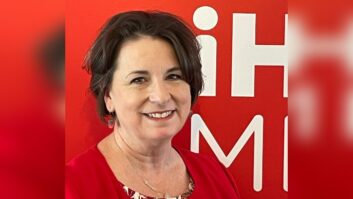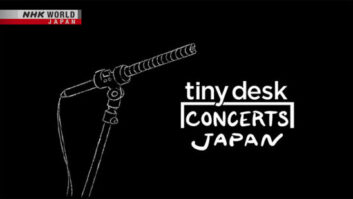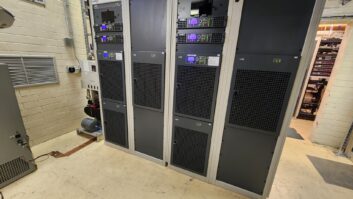
In this exceptionally clear and detailed photograph, we see three AT&T engineers testing the equipment that will be used for the NBC radio broadcast of the inauguration of President Herbert Hoover on March 4, 1929.
This broadcast console was set up in a temporary location underneath the Capitol steps, just a short distance from the spot where announcers Milton Cross and Graham McNamee would describe the live event over a coast-to-coast hookup of NBC stations. The broadcast was even carried over KGU in Honolulu via a shortwave link.
An Historic Recording
Full redundancy was important in an era when tube equipment was not always reliable. There were two sets of line amplifiers available for each of the two network line feeds, requiring two operators to man the equipment during the broadcast.
The rectangular microphone frame held six carbon microphones, and was placed immediately in front of the president to pick up his inaugural address. Two microphones were used for each of three audio feeds — the two network lines and a newsreel camera. (The Hoover inauguration was the first to be recorded by a “talkie” newsreel.)
A large bank of storage batteries, located under the table, powered all the equipment. As was the custom in the early years of radio, the engineers were expected to wear a suit, jacket and tie.
The 1929 inaugural began Herbert Hoover’s tenure as the country’s 31st president, just eight months before the stock market crash.
It was appropriate for his inaugural to be broadcast over the radio: Hoover was a trained engineer (he graduated from Stanford University) who had been the secretary of commerce from 1920 to 1928. In that position, he was responsible for the early regulation of radio communications and broadcasting.
Hoover paid great attention to the problems of broadcasting, and organized several national radio conferences designed to resolve the problems of radio interference. These eventually resulted in the formation of the Federal Radio Commission in 1927.
Hoover, despite his later unpopularity during the start of the Great Depression, may have done more for the early development of radio broadcasting than anyone else in government.
This image is from an original 4×5 glass negative that is a part of the National Photo Company collection at the Library of Congress.
John Schneider is a lifelong radio history researcher. Write him at [email protected].
This is one in a series of photo features from his collection. See past images under Columns/Roots of Radio at radioworld.com.












